The best 4K webcams: ultra high definition cameras for video calls and streaming
Perfect for one-on-one video calls, conferencing and streaming, these are the best 4K webcams on sale today
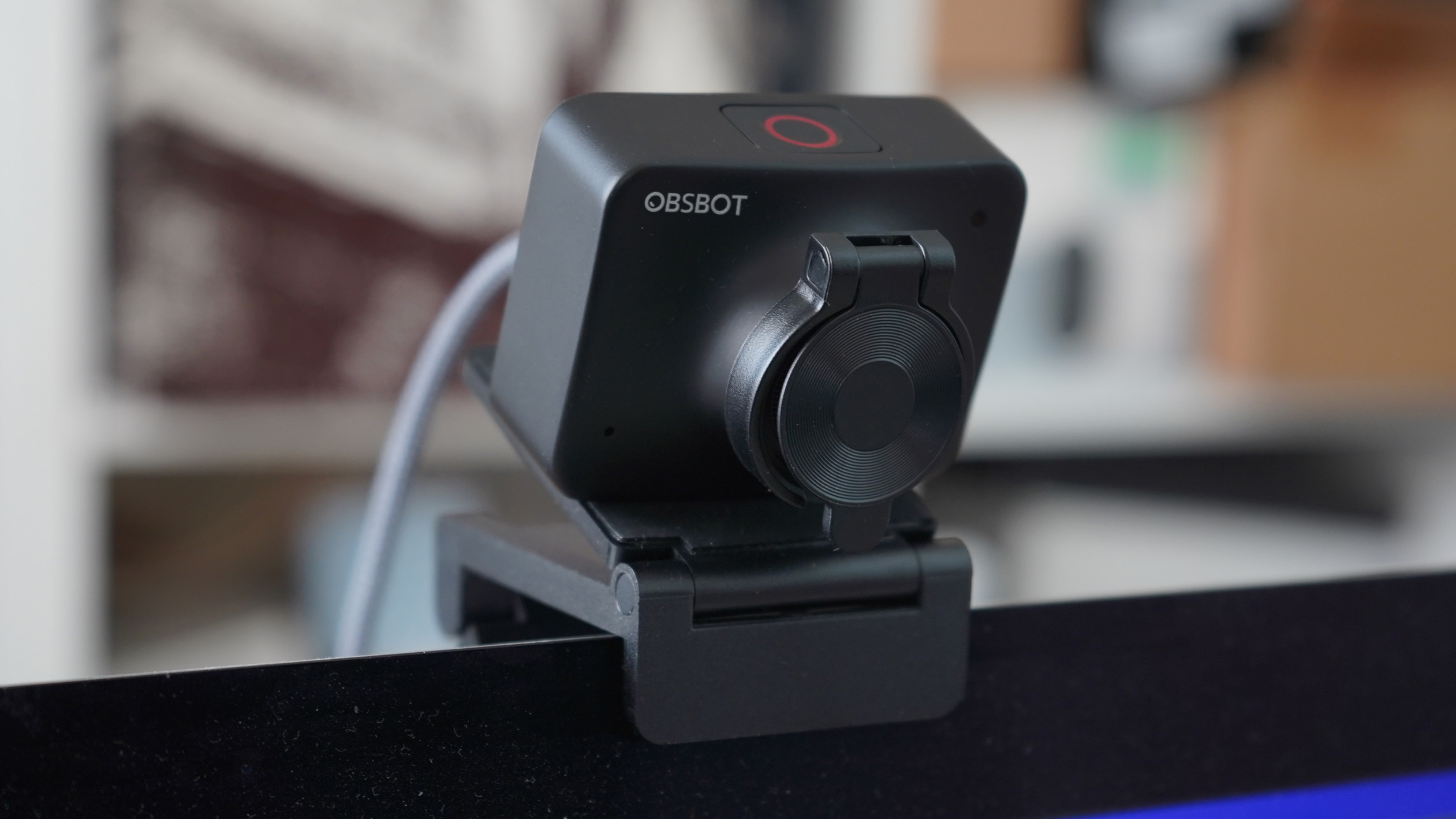
The best 4K webcams are no longer hugely expensive. But what's the best pick for your money? Here, we reveal the best webcams that offer 4K quality, highlighting their key features and capabilities, and explaining which one's likely to suit you best.
We have tested all the. webcams in this guide, looking for which offer the best video quality, audio performance, and extra features. Several of the models have motorized, pan-tilt gimbal heads that can follow if you move whilst you are on a video call - so that you remain center screen.
Regardless of what you’re looking for, one of our top picks is sure to meet your video, streaming, or conferencing needs. Be aware, though, you'll be limited by the service you're using. Many video call services don't support 4K yet, including Zoom. However, that's only really a matter of time, as services like Lifesize already support 4K.

Alistair is a freelance technology journalist who is Digital Camera World's webcam and dashcam expert. He has tested dozens of webcams to help inform his choices in this guide.
Our top picks
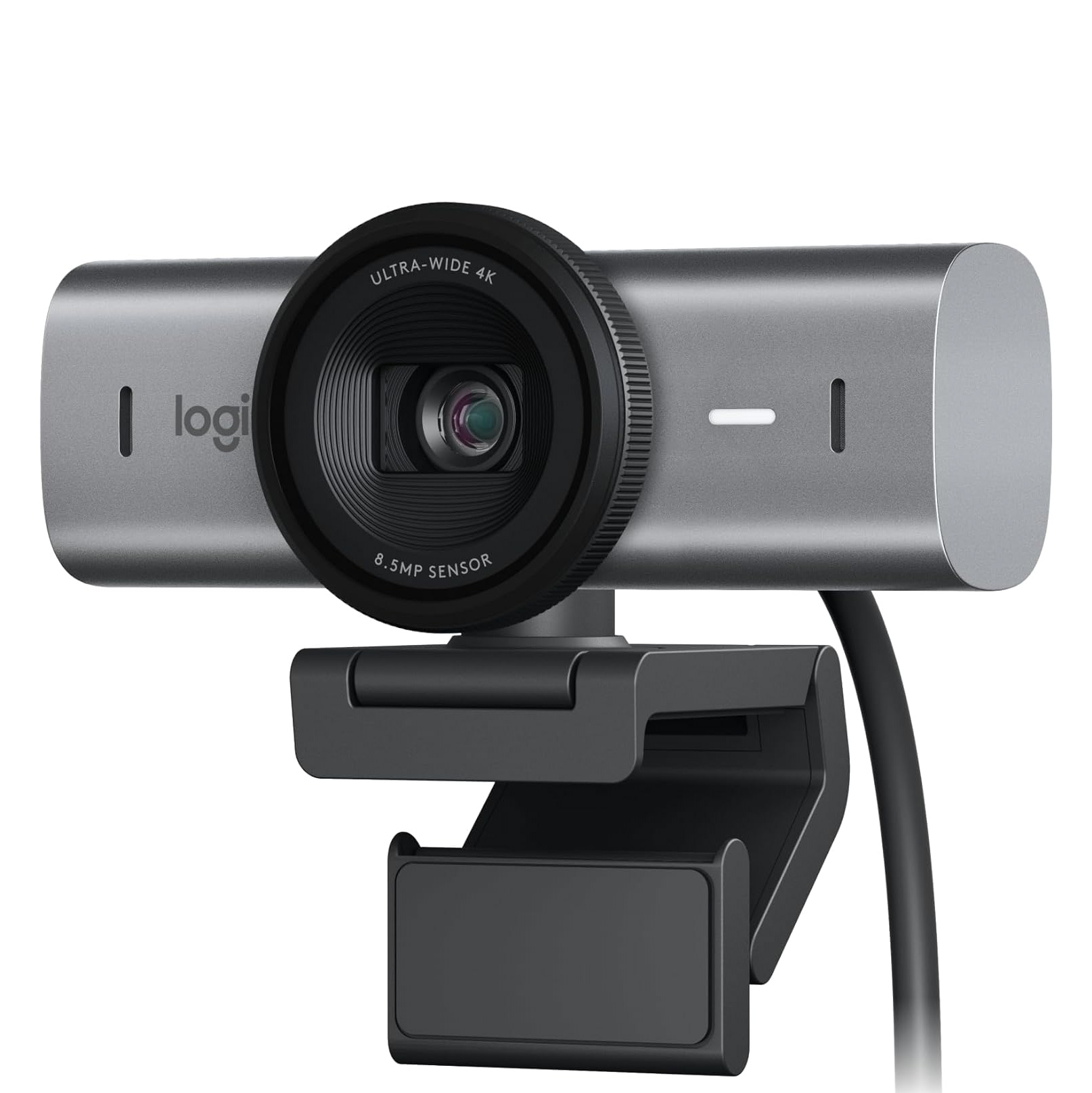
The MX Brio is our favorite 4K webcam - providing top quality video and great audio. Its not the smallest, and it is not motorized - but for most people this is perfect performer for video calls.
Read more
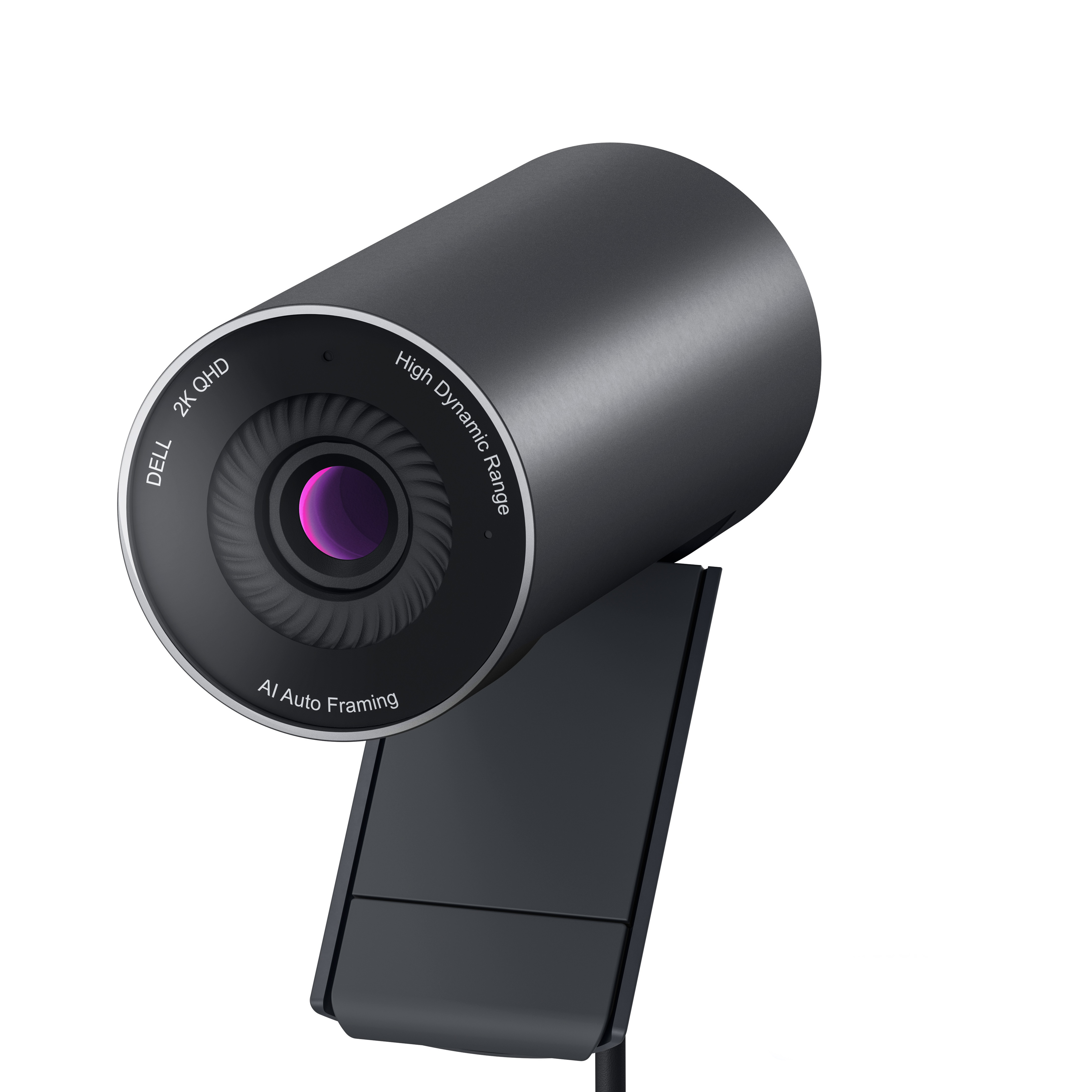
The Dell provides amazing 4K image quality, and also has a clever AI control to ensure that you remain perfectly framed in the picture. Note, though, that it doesn't have an in-built mic.
Read more
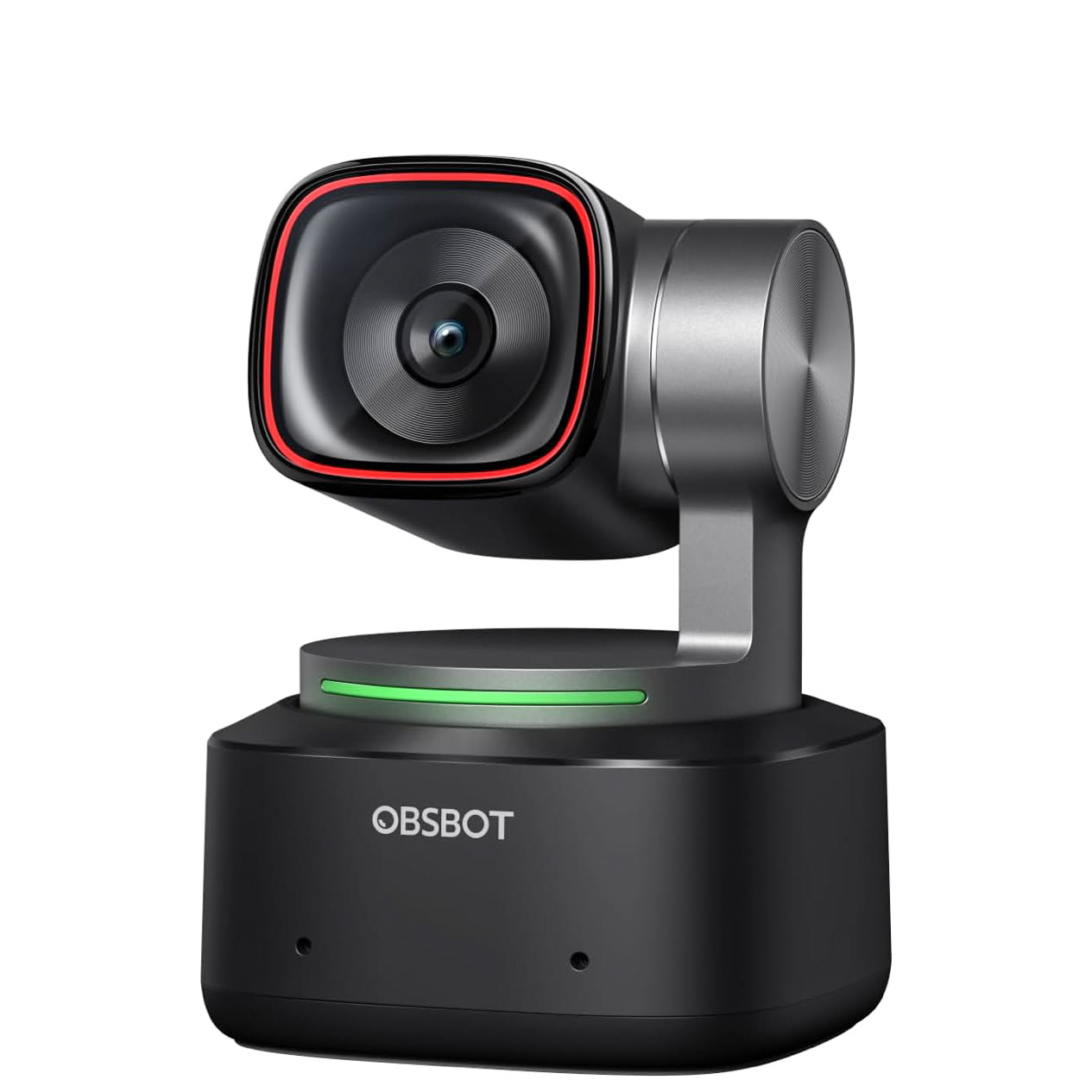
The Osbot Tiny 2 has a built-in motorized mount, which can pan and tilt to follow you around the room, or pick out the person talking. Overall, this AI-enabled option is a bit of a bargain.
Read more
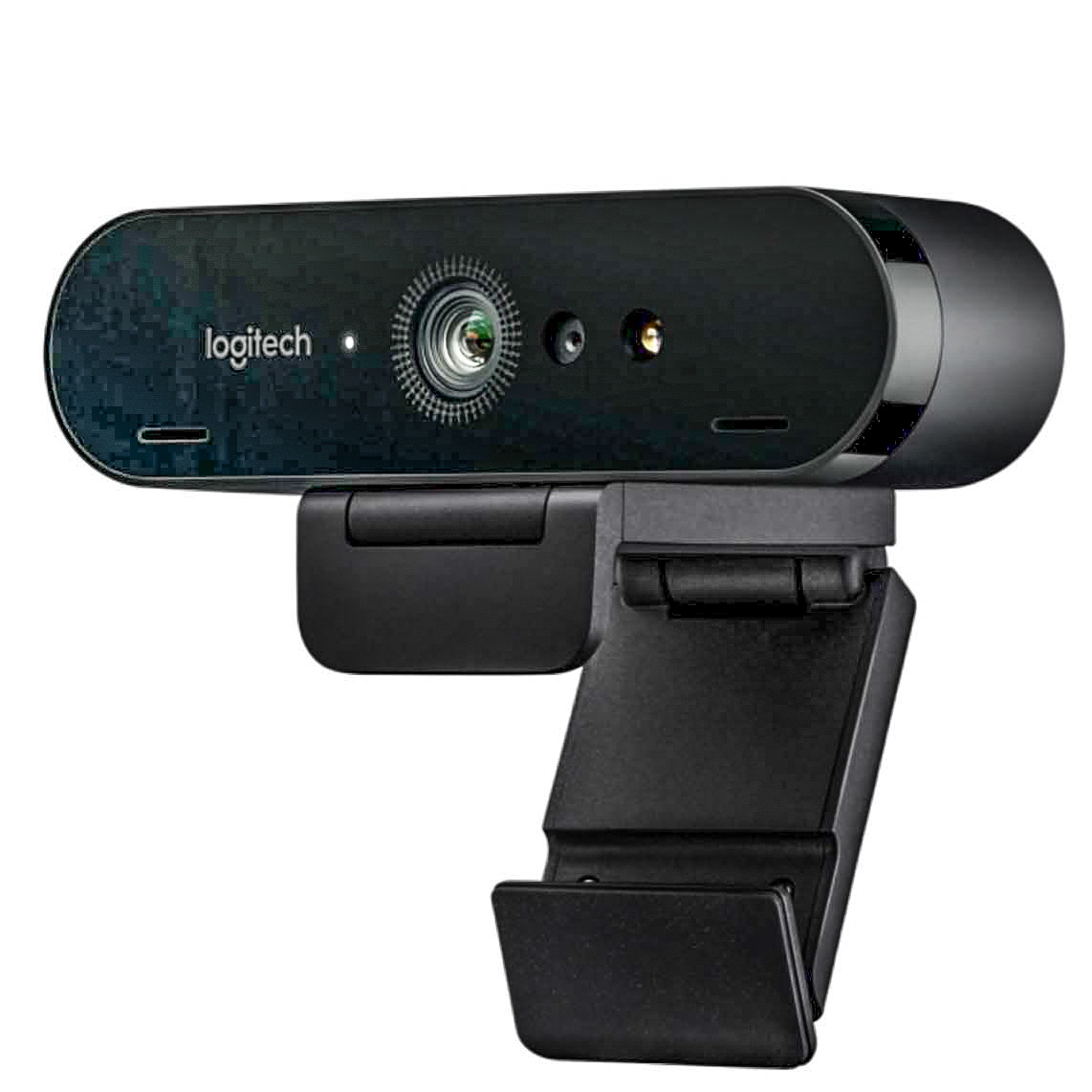
The Brio Stream is our top pick for overall value, as it offers such great image quality, with an HDR system that ensures that details in highlights and shadows are shown in almost any lighting.
Read more
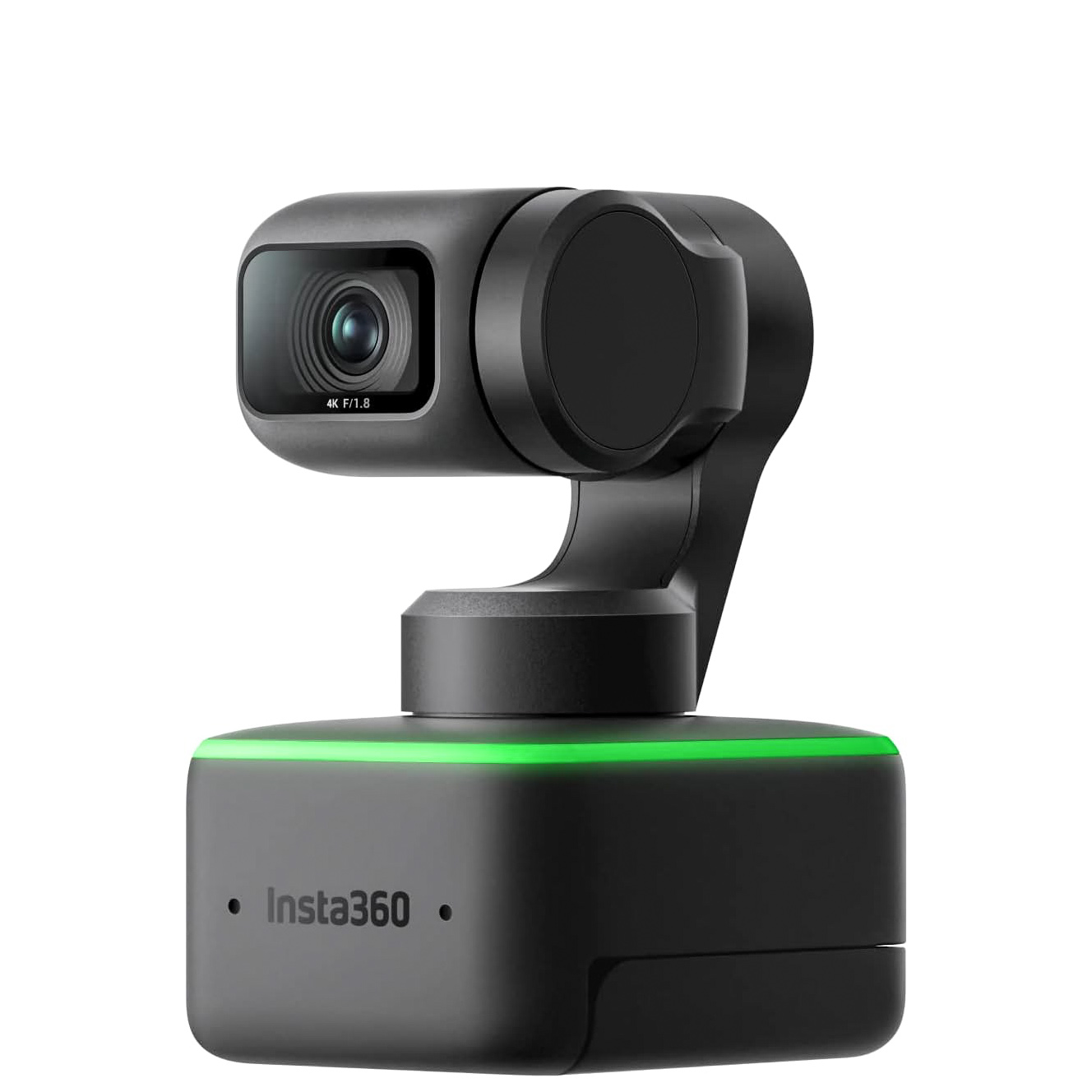
This webcam has a built-in gimbal stabilizer that it uses to track the speaker. Also, you can rotate the camera through 90° to shoot vertical video, which better suited for a smartphone audience.
Read more
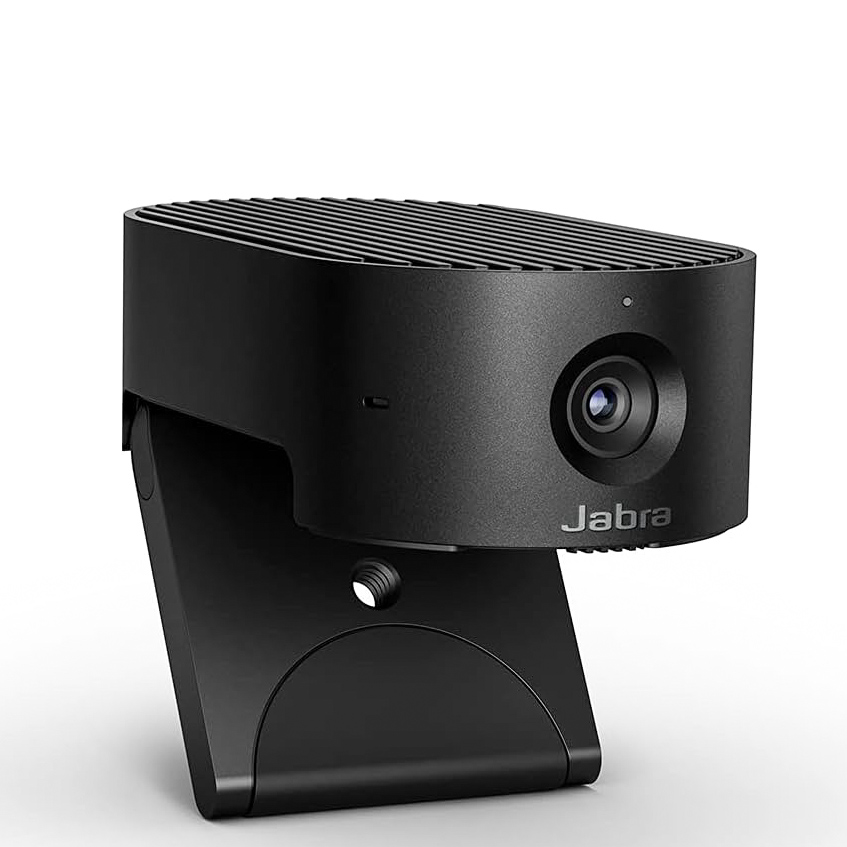
This is a great choice for use by small groups or a huddle - in a typical office meeting room. The camera's AI will identify and zoom in on the person speaking without the webcam needing to move.
Read more
Load the next product ↴

This webcam combines clever AI with a compact form that's great for travel. It works well in gloomy rooms and overall, you'll struggle to find a better device for streaming at this price.
Read more
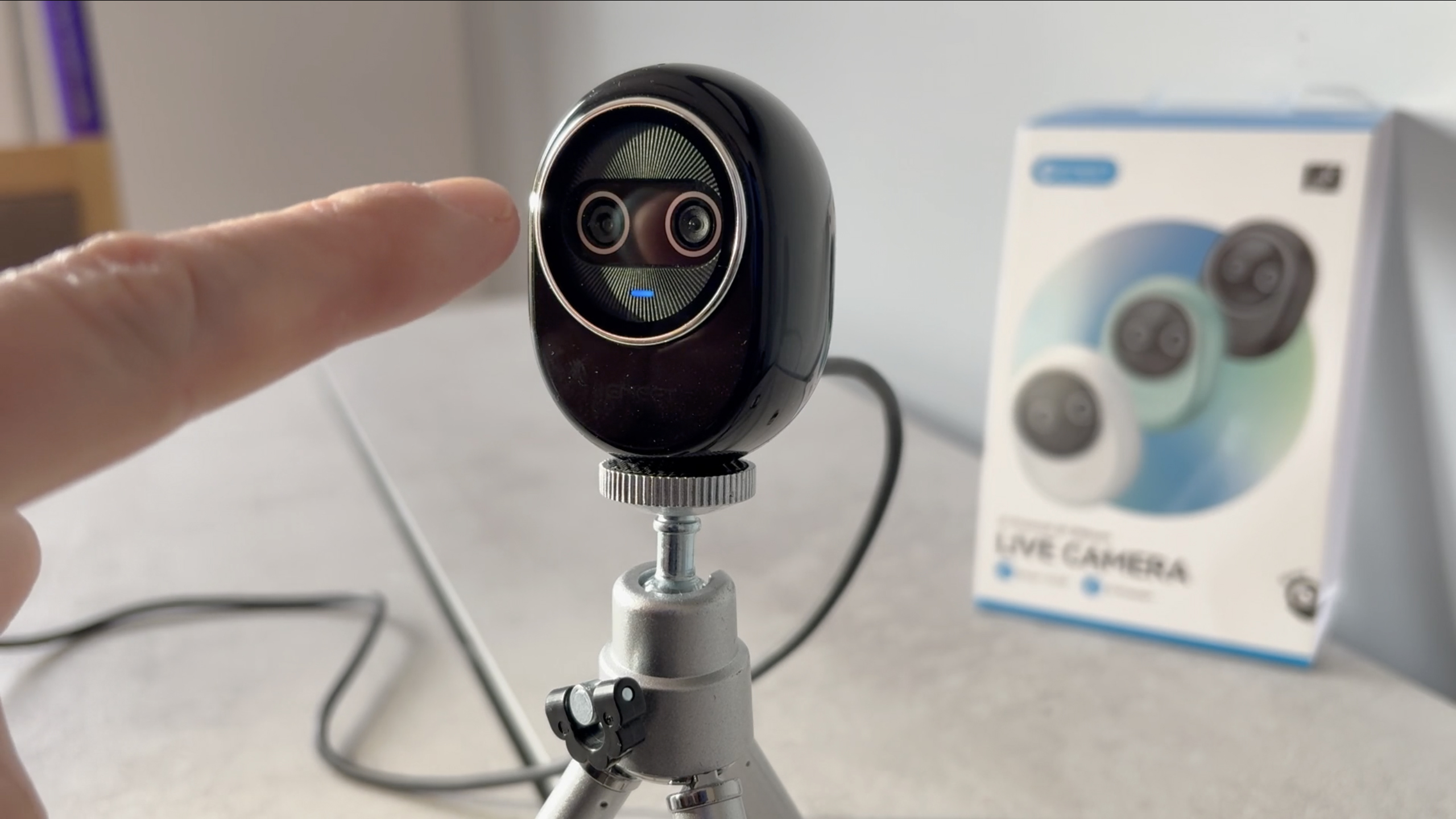
The eMeet uses two lenses - one to give the 4K lens quality, and the other to track you so that you are always centered on screen. It is designed to be used with its tabletop tripod.
Read more
The best 4K webcams
Why you can trust Digital Camera World
Best 4K webcam overall
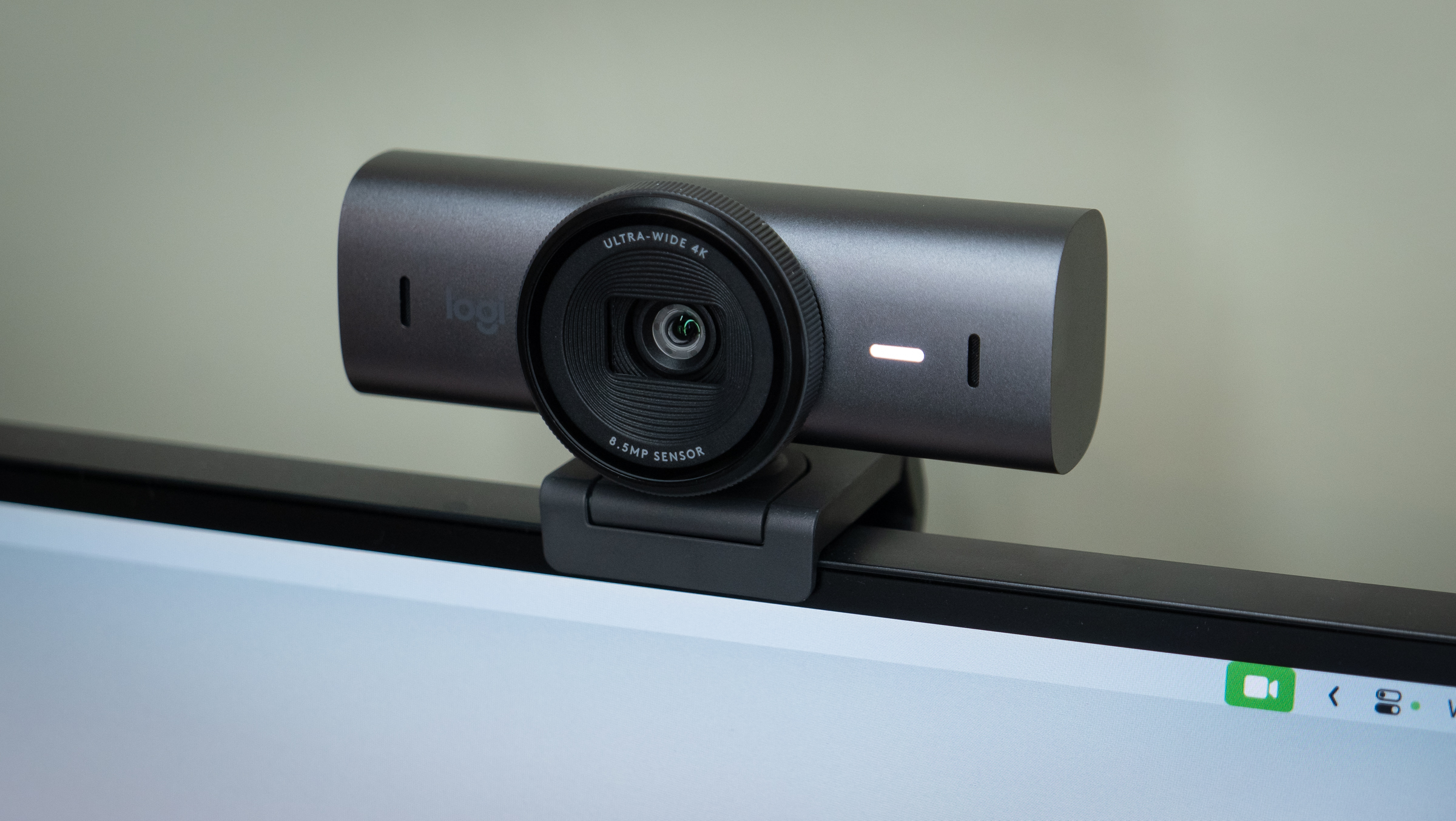

Specifications
Reasons to buy
Reasons to avoid
✅ You want top-quality 4K video: this produces some of the best webcam footage I’ve ever seen.
✅ You need good sound: so often an afterthought with webcams, I was impressed by the audio produced by the two microphones.
❌ You’re on a tight budget: this is one of the more expensive webcams on the market today.
❌ You need a compact webcam: the MX Brio takes up a fair bit of space and if you have a monitor light bar you’ll need to reposition it.
🔎 The Logitech MX Bio is a superb webcam, with 4K resolution, excellent low-light performance, HDR and three great field-of-view options. Not cheap, but a lesson in getting what you pay for. ★★★★★
Simply put, the Logitech MX Bio is the best 4K webcam I have ever used. It looks and feels fantastic, from the metal body to the adjustable monitor stand and the rotating lens cover. It also produces excellent 4K video with HDR, which means it handles low-light environments very well indeed. An added bonus is that the MX Brio comes with Logitech’s free Logi Options+ software for tweaking a wide range of video settings.
I also like how the 90-degree lens is wide enough to take in a whole room, if that’s what you want, or you can crop into 78, and even 65, degrees for a tighter frame.
Dual microphones mean audio is also top-notch, and power via USB-C makes it easy to connect to modern laptops and computers. It’s not a cheap webcam, and it isn’t particularly compact, but for those wanting the absolute best, this is where to look.
It doesn't have a motorized pan-tilt head, however. So if you need a webcam with a motorized pan-tilt head to follow your every move, then keep reading this buying guide and look out for both the Obsbot Tiny 2 and Insta360 Link.
For more details, see our full Logitech MX Brio review.
Attributes | Notes | Rating |
|---|---|---|
Features | From 4K and HDR, to a wide lens, dual mics and a versatile monitor stand with a magnetic fixing, plus a tripod mount, the MX Brio has everything you’ll need. | ★★★★★ |
Design | Although on the large side, the MX Brio looks and feels very well-made. I especially like the adjustable stand and the lens cap that opens/closes with a twist. | ★★★★½ |
Video quality | Full marks. Not only is there a 4K resolution, but excellent low-light performance and HDR ensure footage lives up to expectations. I’m a big fan of the wide, 90-degree lens too; perfect for streamers and other desk-bound content creators. | ★★★★★ |
Value | This webcam is a good lesson in getting what you pay for. It’s not cheap, but costs considerably less than webcams with powered gimbals featured elsewhere in this guide. | ★★★★ |
Best 4K webcam for quality
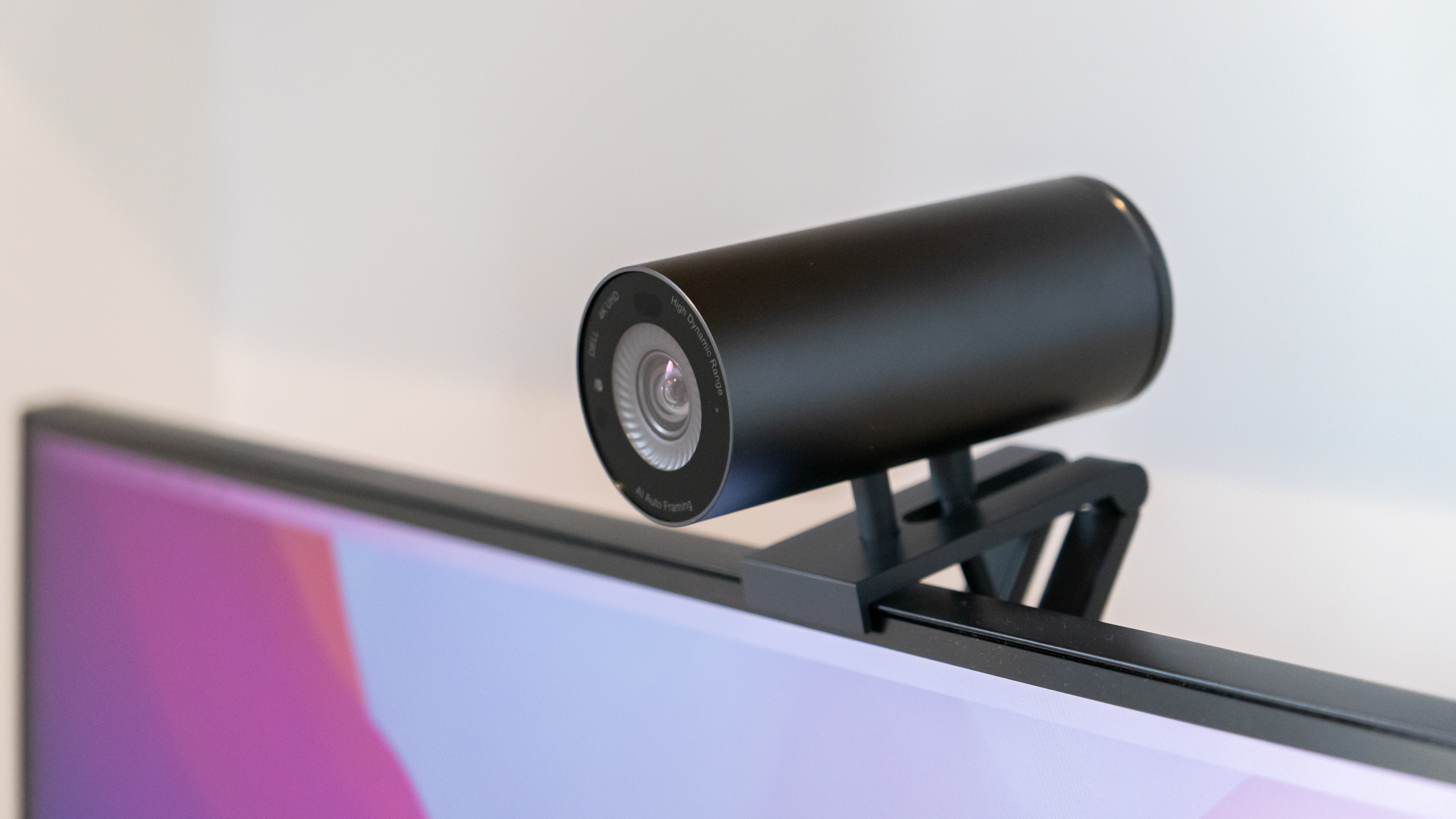
Specifications
Reasons to buy
Reasons to avoid
✅ You want great video quality at a good price: the Dell UltraSharp is a very close rival to the Logitech MX Brio, but is more affordable.
✅ You value good design: in terms of hardware and design, the UltraSharp is one of the best webcams on the market today. It looks great and is built to last
❌ You don’t have a microphone: it’s a strange omission, but the Dell’s lack of a mic means you’ll need to use your own
❌ You’re prone to losing things: the lens cap, which attaches magnetically to the front when covering the lens, can fall off though, and could easily be lost
🔎 The Dell UltraSharp is a fantastic webcam with 4K resolution and HDR. It produces superb video and has a nice, wide 90-degree lens for anyone who needs it. The hardware is also of very high quality. However, the lack of a microphone is disappointing (unless you have your own) and Dell’s software has fewer features on Mac than on Windows.
★★★★½
Looking for the ultimate in image quality? I think the Dell UltraSharp HDR 4K Webcam is tough to beat. Equipped with a large 4K Sony Starvis CMOS sensor, it's capable of drinking in more light than an average webcam, making for a better-quality picture. And, like my number one choice above, it has HDR capabilities, making for a balanced image even in challenging light conditions, aided by internal software.
Back when I first reviewed this webcam, I was deeply impressed. “Thanks to the large sensor and high resolution, video quality is absolutely superb. It produces a picture that is among the best of any webcam we have ever used and, when viewed from the other end of a video call, isn’t too far behind that of a DSLR hooked up to a PC."
There's also AI-powered auto framing, a clever feature that automatically keeps you at the center of the screen. Just like the Logitech MX Brio, the Dell gives users the choice of a 65, 78, or 90-degree field of view. The Dell UltraSharp HDR 4K Webcam also lets you delve into settings to fiddle with brightness, sharpness, contrast, saturation, and more. This is also where you can control digital zoom or make adjustments to the autofocus.
The main reason it's not my number one is the lack of a built-in microphone. Dell clearly thinks anyone who spends this kind of money on a 4K webcam will probably want to sort out an external one for better audio; if that's you, then check out our guide to the best microphone for vlogging.
For more details, see our full Dell UltraSharp review.
Attributes | Notes | Rating |
|---|---|---|
Features | A high resolution is one thing, but HDR and a wide lens are really the features worth having when it comes to high-quality webcams. It also offers AI-powered auto framing to keep you neatly in shot. | ★★★★ |
Design | The Dell UltraSharp has a premium metal design that looks and feels like it’s built to last. The monitor mount also works well, but the camera is larger than many others. | ★★★★ |
Video quality | There’s really very little to fault here. There’s 4K resolution with HDR, a wide lens and fantastic low-light performance thanks to that Sony CMOS sensor | ★★★★½ |
Value | At around $150, this isn’t the cheapest dash cam around. But compared to some other 4K offerings, it actually represents great value – just so long as you have your own microphone, of course. | ★★★★ |
Best autotracking 4K webcam
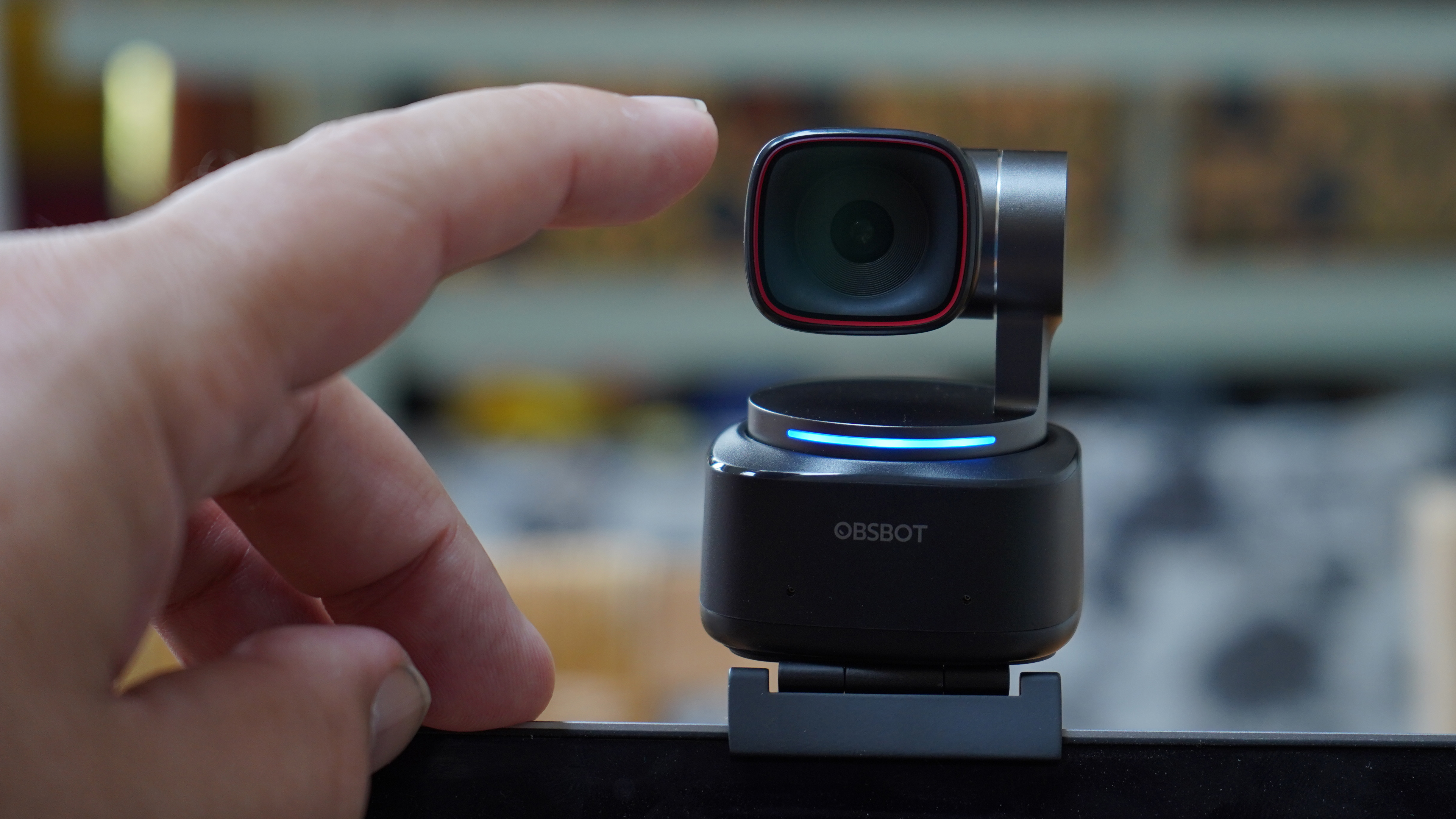
Specifications
Reasons to buy
Reasons to avoid
✅ You need a webcam that follows you around: the motorized gimbal is great for those presenting or demonstrating online
✅ You need a webcam that performs well in any light: we were impressed with its performance across various lighting environments
❌ You’re on a tight budget: like other webcams with gimbals, the Obsbot is pricey.
❌ You don't need gimbal: make sure you’ll really make good use of the motorized mount
🔎 Much like the Insta360 Link, the Obsbot Tiny 2 is a 4K webcam with a fast and precise motorized gimbal. This makes for top-notch subject tracking, even if you walk out of the frame, and the ability to quickly switch between landscape and portrait, or switch focus to your desk while on a call.
★★★★½
Obsbot has established itself as the experts in smart tracking - webcams that follow the person speaking round the room. The Tiny 2 is a third-generation product, and the best yet, with a larger 1/1.5-inch dual-ISO imaging sensor capable of snappy focusing as well as all the AI tricks well-established. The key advantage over a standard webcam is the motorized pan-tilt head, and a digital zoom, that can crop in to ensure your face fills the frame - even if you move.
When our reviewer put this to the test, it worked very well in practice. The image was crisp, but not aggressively so. The responsiveness of the focus was noticeably better than the camera's predecessor, and the AI tracking, when engaged, seemed to have little problem following him from being sat right in front of the device to the counter behind.
Thanks to the larger sensor, if you're exclusively using horizontal format video it outperforms the Insta360 Link. It also boasts features like hand tracking and Obsbot can also sell a dedicated remote control.
The neatly organized but extensive app offers a lot of functionality, including beauty modes and blurred backgrounds if you're so inclined, though it's possible to use the dynamic gesture controls to handle most operations.
Check our full Obsbot Tiny 2 review.
Attributes | Notes | Rating |
|---|---|---|
Features | Stand-out features of the second-generation Tiny include voice control, AI-powered auto framing and desk mode for presenting whatever’s on your desk on a video call. It also has a larger imaging sensor than its predecessor, plus true USB 3.0 data transfer speeds. | ★★★★½ |
Design | From the clever motorized gimbal to the included hard carry case, the Tiny 2’s design is pretty much flawless. It snaps to the monitor stand with a magnet, or can be fixed to a tripod. | ★★★★ |
Video quality | In good light video is flawless, then in low-light there’s very little noise. Half a point lost for recorded video not being as smooth as we’d hoped. | ★★★★½ |
Value | It’s not cheap, but the gimbal won’t be needed by everyone. | ★★★★ |
Best value 4K webcam
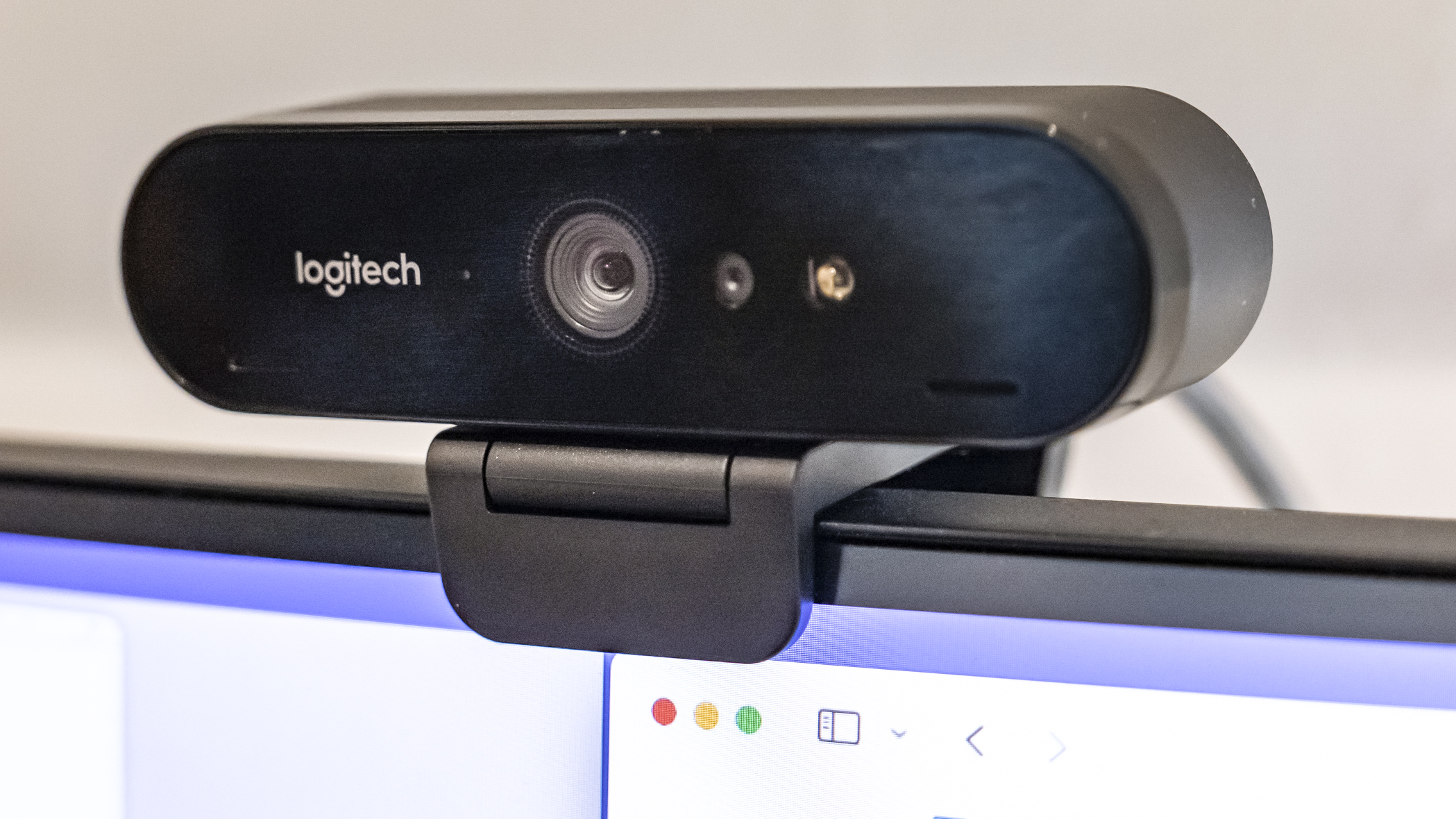
Specifications
Reasons to buy
Reasons to avoid
✅ 4K with HDR is your number one priority: instead of distracting with gimbals and such, the Stream focuses on what really matters – excellent 4K video
✅ You want multiple field-of-view options: the Brio Stream lets you pick to shoot at either 65, 78 or 90 degrees.
❌ You need a speedy frame rate: 4K webcams tend not to offer frame rates beyond 30 fps. If you want up to 90fps (a real rarity) you’ll need to lower the resolution to 720p
❌ You want high-quality hardware: the camera itself is fine, if bland, but the monitor mount and lens cover look and feel cheap
🔎 It may lack the high-end hardware of the Logitech MX Brio or motorized webcams, but the Brio Stream does a fantastic job of producing 4K video with HDR at a good price.
★★★★½⯨
The Logitech Brio Stream is one of the best 4K webcams on the market today, and for most people I think it could well be the best. Not only does it produce great 4K footage that is sharp and clear, but the inclusion of HDR means it produces some of the best webcam footage I’ve ever seen.
By balancing out the shadows and the highlights, this camera can handle all sorts of tricky lighting situations. So if your video calls are continually disturbed by light from a nearby window, this webcam will go a long way toward rectifying the situation.
The Brio also won me over with its smooth frame rate, ease-of-use and good audio quality. There are also options for three field-of-view settings - 90, 78, or 65 degrees - which allows you to experiment with your framing, so you can show more or less of your environment. Add in dual omnidirectional microphones for improving audio quality, and you have a highly capable, do-it-all 4K webcam.
Some other Logitech webcams do have more frame-rate options (this one doesn't have the 90fps options at 1080p, which you get on the standard Logitech Brio). But as long as those aren't deal-breakers, this seriously capable 4K webcam will suit practically any user.
For more details, see our full Logitech Brio Stream review.
Attributes | Notes | Rating |
|---|---|---|
Features | This webcam nails the basics – as well as 4K video with HDR, the Brio Stream is compatible with Windows Hello for logging in with facial recognition. It also comes with a free 12-month trial of XXSplit, the video streaming and recording application. | ★★★★ |
Design | This webcam won't win many design awards, but it’s still relatively small and entirely inoffensive. The monitor stand works well, while the plasticky lens cover feels a bit like an afterthought. | ★★★½ |
Video quality | This is where the Brio Stream really shines, thanks to its 4K resolution and HDR support. Low-light environments are dealt with well, the 90-degree lens is wide and audio quality is impressive. | ★★★★ |
Value | At around $150 / £150, I think this webcam offers excellent value for money, and is around half the price of the most expensive options currently available. | ★★★★½ |
Best for vertical video
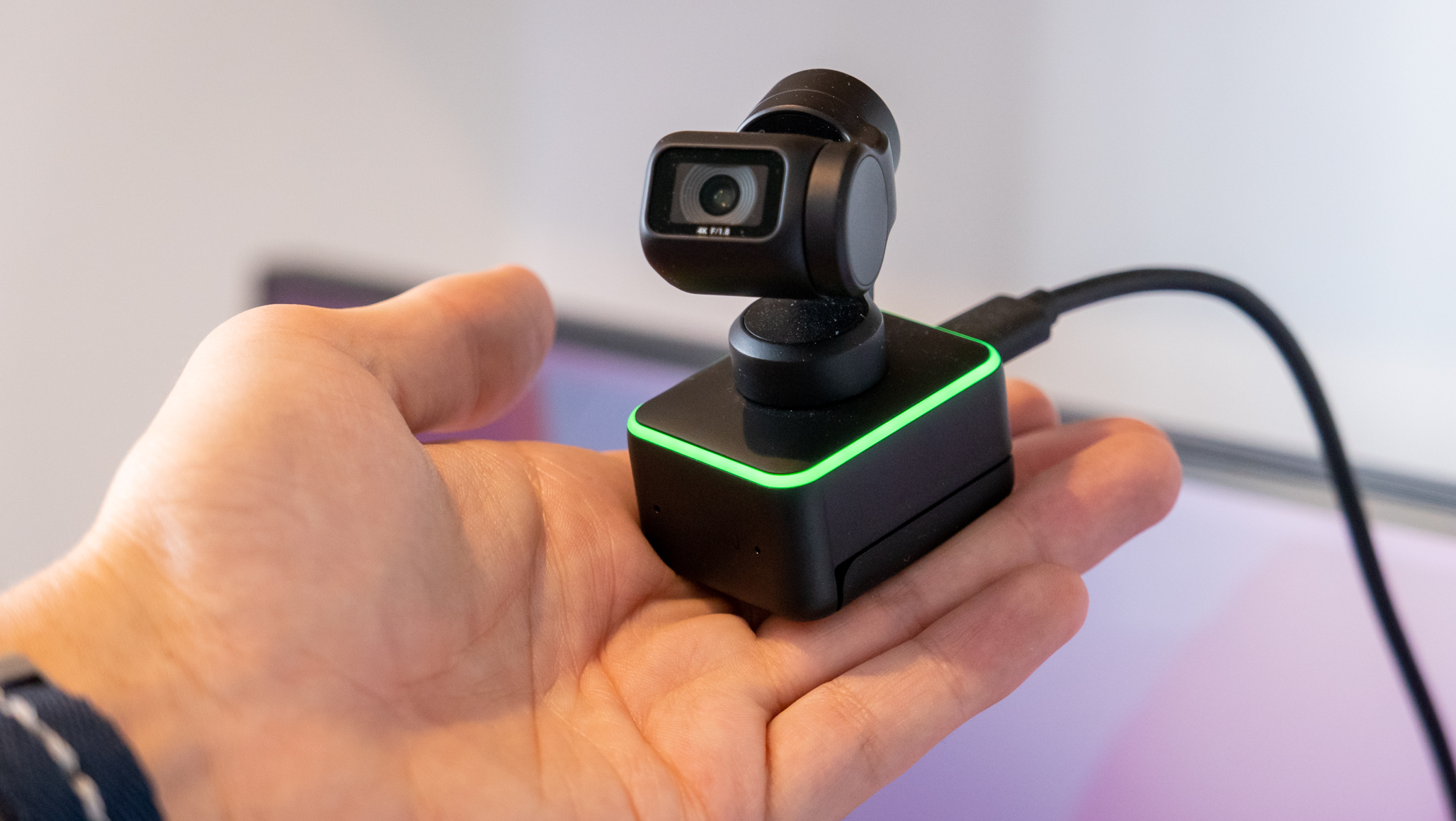
Specifications
Reasons to buy
Reasons to avoid
✅ You really need a gimbal: it’s an expensive addition, but the gimbal works incredibly well.
✅ You present frequently on video calls. The gimbal keeps you in shot and can tilt the camera down to show what’s on your desk.
❌ You’re on a budget: there are plenty of cheaper 4K webcams if you don't need the gimbal
❌ You want a big image sensor: the Obsbot Tiny 2 has a gimbal, but packs a larger 1/1.5in sensor for better 4K video
🔎 The Insta360 Link works incredibly well. I was very impressed with the 4K image quality, while the AI-powered gimbal responds quickly and accurately to movement, always keeping the subject perfectly in frame.
★★★★½
The Insta360 Link webcam is expensive, and it enjoyed a few months as the Rolls Royce option in this buying guide. Its gimbal design and AI tracking tech mean the lens rotates to follow you wherever you go, with automatic zooming and framing, but that's something the Obsbot Tiny 2 can match – and it has a bigger image sensor too.
The Insta360’s 1/2-inch image sensor isn't bad, though. Where this does stay ahead is for social media streamers wanting to work in the vertical format since the camera itself can be rotated. You can control the camera with three simple hand gestures: one to enable AI tracking, one to zoom in/out, and one to enable Whiteboard Mode.
In use, I found the webcam close to flawless. Video quality from the large, half-inch sensor was excellent on both sides of video calls. The way it moved to keep everyone in frame worked brilliantly, while autofocus was quick and pin-sharp.
You get two noise-canceling mics. And the desktop software allows you to manually adjust brightness, exposure, gimbal position, and more. For many people, these pro-level features will merely be overkill, but if they prove useful to you, the Insta360 Link webcam may well be worth its premium price.
For more details, see our full Insta360 Link review.
Attributes | Notes | Rating |
|---|---|---|
Features | This webcam blends great 4K video quality with good audio and a clever trick up its sleeve, in the form of a motorized gimbal that uses AI to keep you nicely in shot. | ★★★★½ |
Design | Styled like a Disney Pixar character, you could almost describe the Link as cute. It’s remarkably compact, considering the tech inside, and clips nicely to the top of almost any desktop monitor, or even a laptop lid. | ★★★★ |
Video quality | Very good indeed. Although the sensor isn’t quite as large as the Obsbot Tiny 2’s, the Link still does a great job of handling different lighting conditions and reproducing colors accurately. | ★★★★½ |
Value | Although sometimes discounted, this is one of the most expensive webcams on the market. For those who make good use of the subject-tracking gimbal and the Whiteboard mode, it’ll be worth it. Others should look elsewhere. | ★★★★ |
Best 4K webcam for meeting rooms
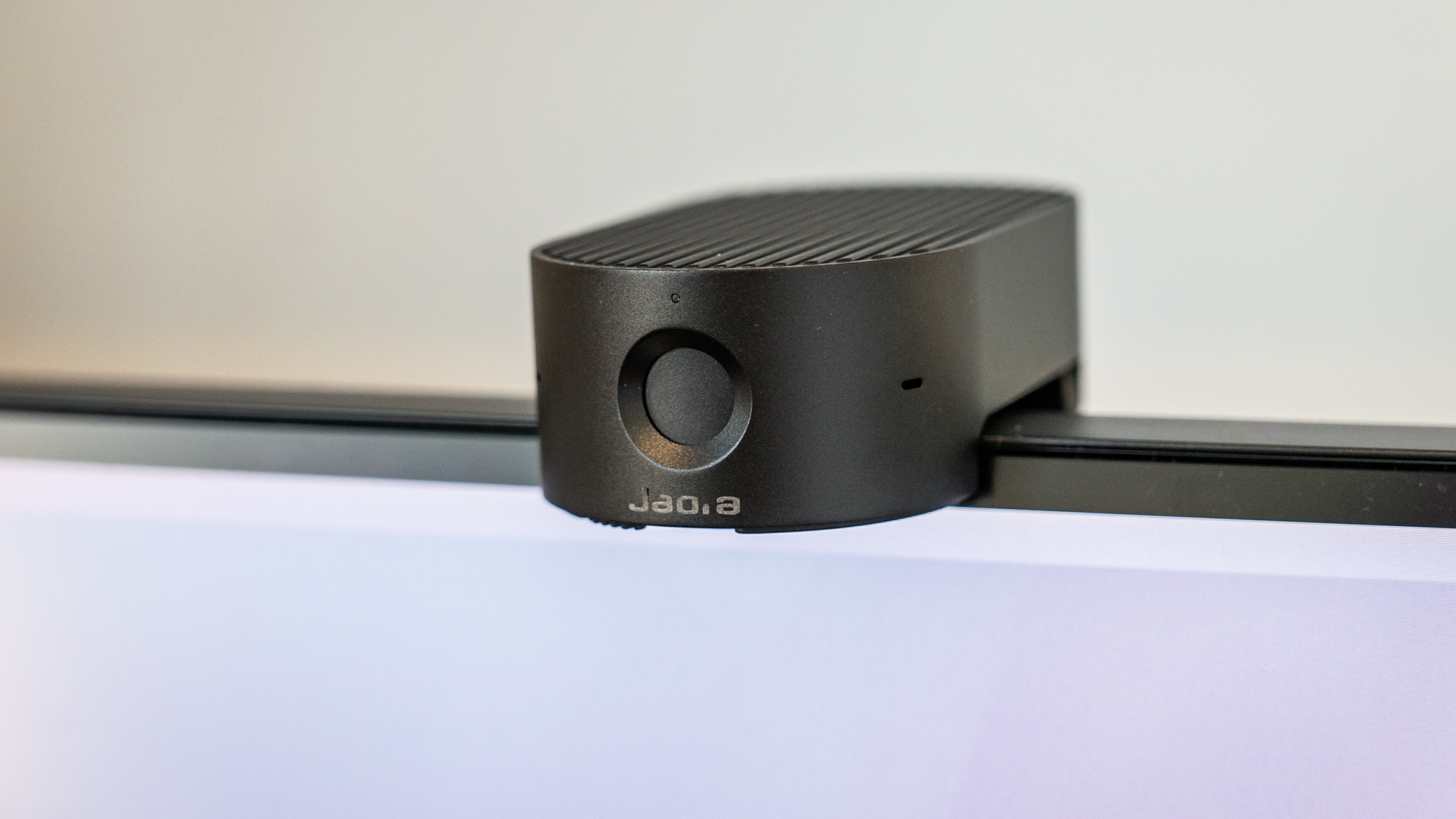
Specifications
Reasons to buy
Reasons to avoid
✅ You need a professional-grade webcam: this is a great option for a company meeting room
✅ You need clever panning and zooming: the webcam can pick out who is talking without the need for a gimbal
❌ You attend video calls alone: this is for huddles, so overkill if you work remotely
❌ You’re on a budget: this is priced as a premium product
🔎 The Jabra Panacast 20 is intended for professionals, and specifically for environments where several people sit around a conference table to join a video call. It uses its 4K resolution and AI to zoom in on whoever is speaking, then pan to whoever speaks next.
★★★★½
Want a full view of a room, such as when you’re streaming a physical meeting around a conference table? Then the Jabra Panacast 20 is our recommendation.
Its AI-powered zooming and panning means it automatically includes everyone on the call, without the physical camera needing to move and causing a distraction. Plus, while most videoconferencing services don't yet support 4K, the high resolution on offer here means the camera can zoom in on someone (lossless up to 6x) and still produce a Full HD image.
Our reviewer also noted how the camera also uses AI to cleverly adjust the lighting in dim and dark rooms. Many webcams adjust their exposure to tackle particularly dark or bright rooms, but where they tend to be heavy-handed in their actions, while in our tests the Panacast 20 produced video that was nicely balanced without feeling artificial.
A triple-mic array means you get impressive sound quality, too. And overall this 4K webcam delivers some of the best video call quality we’ve ever seen. While this is an expensive purchase, the build quality is excellent, and you get USB-C connectivity too.
For more details, see our Jabra Panacast 20 webcam review.
Attributes | Notes | Rating |
|---|---|---|
Features | Jabra Panacast 20 still counts excellent 4K video among its primary features. The metal body is also a thing of beauty (as far as webcams go…) and artificial intelligence is employed to intelligently zoom and pan to keep you in the center of the frame. | ★★★★ |
Design | This is a high-quality webcam with a compact metal body and a monitor mount that feels they are built to last. | ★★★★½ |
Video quality | You might not need a $300 webcam, but the quality of the Jabra makes it clear where your money has gone. It has a solid, cold-to-the-touch, industrial design that reminds us of how well-built Apple’s old iSight camera felt when it arrived some 20 years ago. | ★★★★ |
Value | Although sometimes discounted by between 10 and 20 percent, this is still one of the most expensive webcams on the market today. For those who frequently use the subject-tracking gimbal and features like Whiteboard mode, it’ll be worth it. Others should probably look elsewhere. | ★★★★ |
Best compact 4K webcam
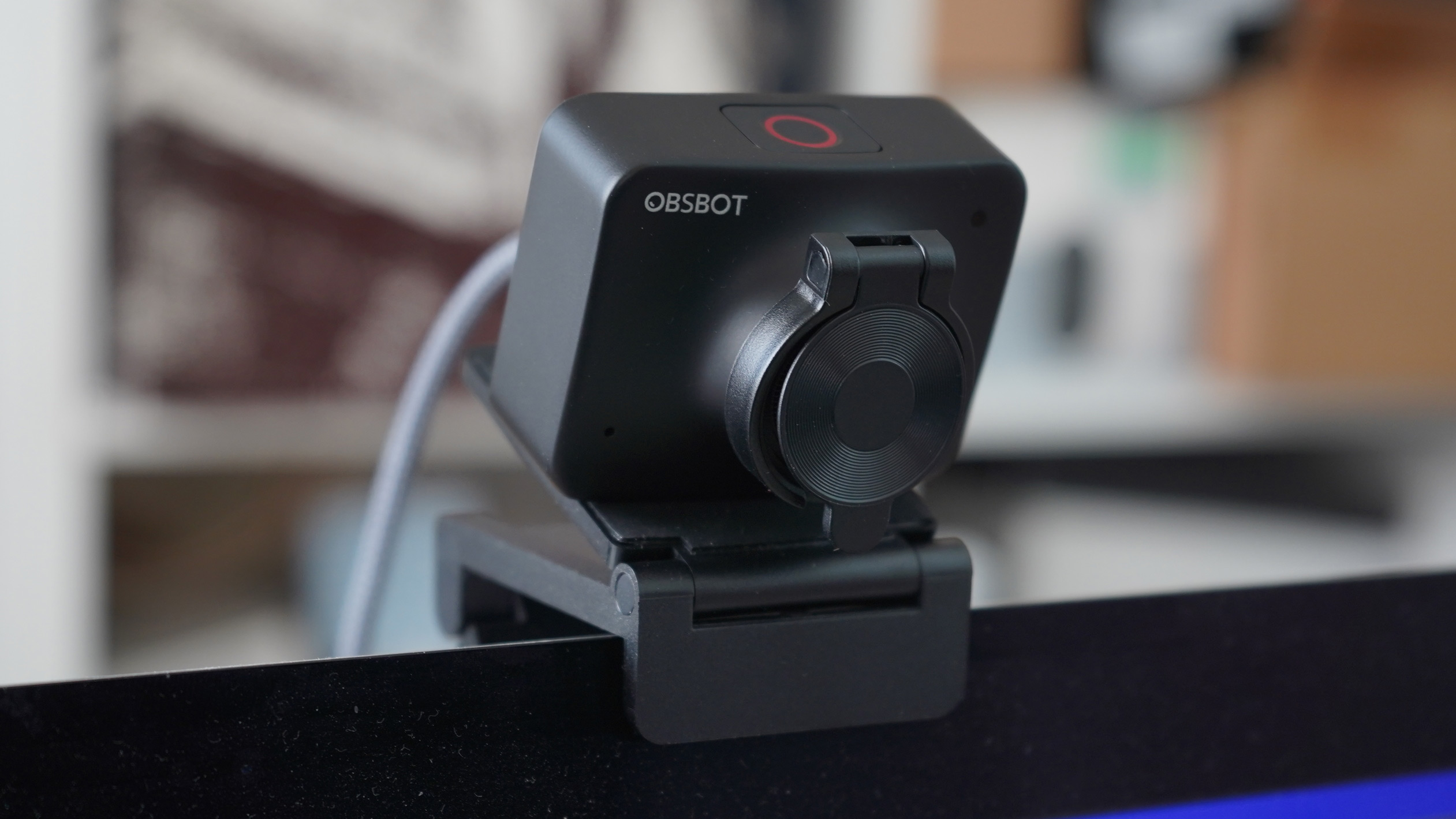
Specifications
Reasons to buy
Reasons to avoid
✅ You want a lot of webcam for your money: great for streaming, and offers AI tracking of the person speaking
✅ You need lots of app features: control panels allow you to choose your virtual background, record pieces to camera, and more
❌ You want simplicity: this is a feature packed option, that want suit those who don't like lots of settings
❌ You need a motorized gimbal: the camera is fixed, although AI tracking can still follow the speaker.
🔎 The Obsbot Meet 4K is a great webcam with 4K video, AI smarts for keeping you in frame, a compact design and an app that offers extensive control options. A great option for video callers and content creators alike.
★★★★½
The world has more than its share of dubious quality webcams built into computers, some very small, so there will always be a need for alternatives. The Obsbot Meet 4K is a really rational and balanced choice. Unlike the Obsbot Tiny 2, it does not have a motorized pan-tilt head, so not so well suited to those who prowl around while talking. Even so, it offers a good quality AI-controlled camera and the option of 4K.
Content creators will struggle to find a better device for streaming, especially at this price. The settings afford the ability to work with different kinds of lighting, including pretty gloomy rooms. Our test was created using the ‘Record’ function of OBS – a popular streaming platform – and the fact Obsbot’s control software causes no issues is not to be sniffed at.
The microphone was a little quiet, but most apps allow this to be adjusted or streamers may well be using another anyway. Our only real issue was the slight sluggishness of some settings adjustments, but these are rarely an issue in day-to-day use. It’s also a shame it doesn’t include a nice case like its sibling, but it is a good bit cheaper. That said with no exposed moving parts it can travel safely, and we’d definitely want it in our kit bag.
For more details, see our full Obsbot Meet 4K webcam review.
Attributes | Notes | Rating |
|---|---|---|
Features | 4K video is an obvious headline feature, but so too is the Obsbot Meet’s software. The app offers extensive controls for creating and streaming video just the way you want it, without the need for additional software. | ★★★★ |
Design | This is one of the smaller 4K webcams we’ve tested, with a compact design that makes it look like a little GoPro attached to the top of your monitor. | ★★★★½ |
Video quality | We found this webcam worked reasonably well with imperfect lighting, and its AI did a decent job of keeping us in frame. There was slightly too much contrast by default, but the software’s broad configurability options made this easy to tweak. | ★★★★ |
Value | It's not the cheapest webcam around, but it still represents decent value for money given its 4K resolution, compact design and comprehensive software. | ★★★★ |
Best twin-lens 4K webcam
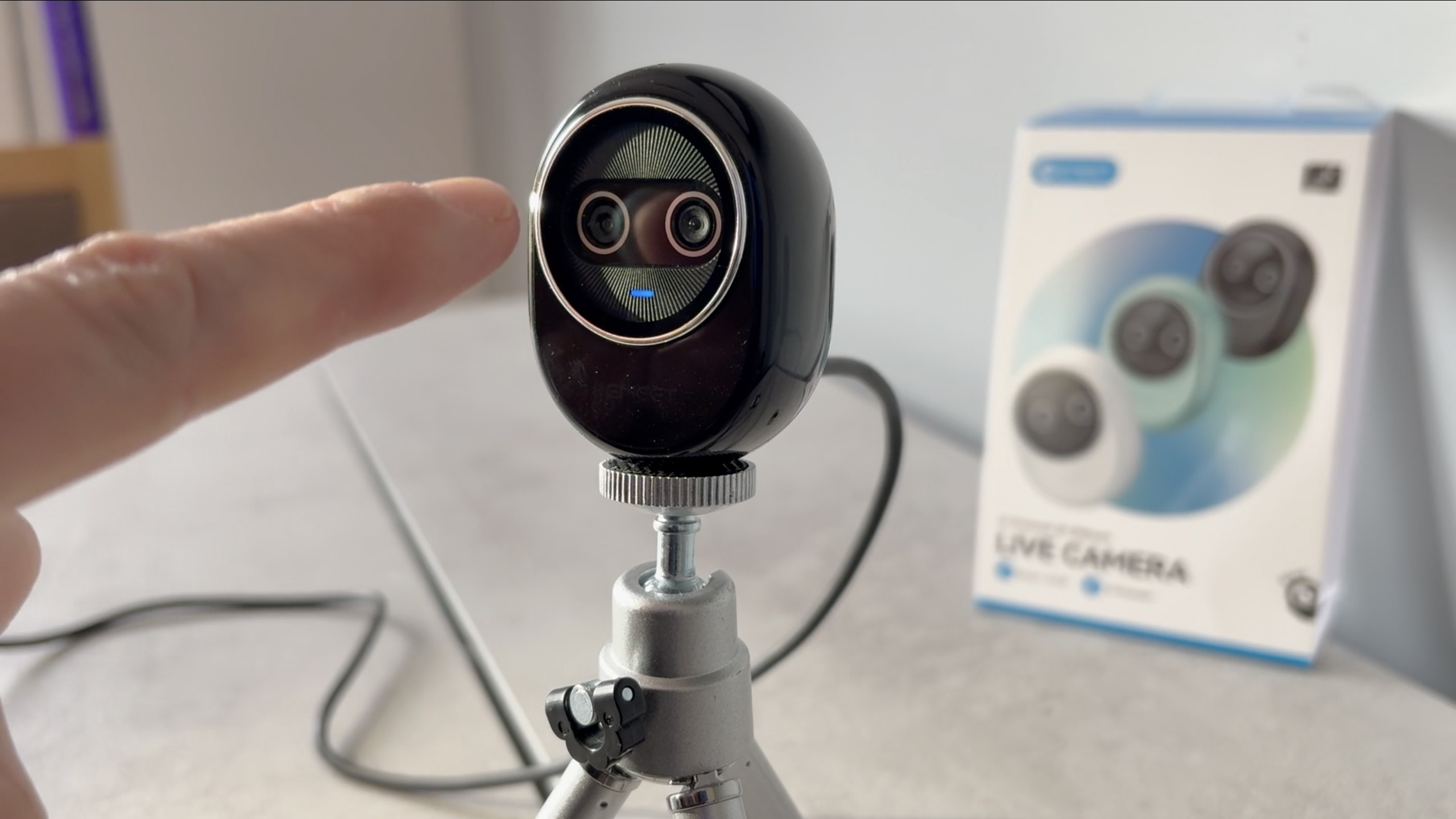
Specifications
Reasons to buy
Reasons to avoid
✅ You want AI tracking: the twin-lens set-up of this webcam ensures you don't just stay in the picture, you look great with it.
✅ You want lots of control: the eMeet app gives you lot of scope to prioritize what you want in focus, and offers different filtration options too
❌ You want it mounted to your laptop: this is designed to be used with the tabletop tripod
❌ You want top-rate audio: the quality from the three-mic set-up is disappointing
🔎 The Emeet Piko+ is a compact 4K webcam which uses two cameras effectively to give great image quality – but is rather let down by the sound quality.
★★★★½
The Piko+ uses a distinctive dual camera system to capture stunningly sharp UHD quality footage. The lens on the left (as you look at the Piko+’s face) is responsible for capturing the Ultra High Definition 4K footage that boasts a strong contrast while simultaneously featuring detail in the shadows and highlights. The Portrait lens on the right uses AI to track the subject’s face and keep it pin shape at all times. The two cameras look like eyes, with a horizontal blue power light forming the mouth on the Piko+’s face. The webcam itself is tiny enough to sit in the palm of your hand, making it a perfectly portable accessory for streaming video to your PC when you’re on location. The Piko+ sits on a supplied mini tripod that you can rotate to send portrait or landscape oriented footage to your laptop.
The Piko+ is supported by the free Emeet Studio app which enables you to tweak colour and tone as well as change the criteria used by the AI tracking in the Portrait camera (from Face Tracking to Full Body Tracking for example). You can also use the app to turn on noise reduction when using the Piko+’s built-in mics. Talking of sound, the audio quality captured by the Piko isn’t on par with its UHD video feed, but you can choose to use you laptop’s built-in mic instead while streaming the Piko+’s high quality video feed.
Summary: If its audio quality matched the look of its live-streamed UHD video footage then the Piko+ would earn five stars, but the inferior audio knocks off half a star.
For more details, see our full Obsbot Meet 4K webcam review.
Attributes | Notes | Rating |
|---|---|---|
Features | Dual lenses enable the Piko+ to capture 4K UHD footage and AI-assistance ensures fast and effective face focus. | ★★★★★ |
Design | Compact and lightweight with an adjustable mini tripod that enables you to stream in portrait or landscape mode. | ★★★★★ |
Video quality | The dual lenses pick out delicate textures and details while streaming a high contrast well-exposed feed that stays sharp. Shame about the less effective audio capture. | ★★★★ |
Value | Slightly more expensive than others in the Emeet webcam range but the improved visual quality justifies this extra cost. | ★★★★ |
FAQs
What is a 4K webcam?
A webcam is a video camera that you connect to your computer to capture and transmit video. A 4K webcam does so at a resolution of 3840 x 2160 pixels, which is commonly referred to as 4K resolution. This means it provides clearer and more detailed video compared to lower resolution webcams. This makes it a useful tool for video conferencing, streaming, and content creation.
Is it worth getting a 4K webcam?
If you have a good internet connection, it is possible to conduct 4K video calls, but 4K cameras have two other uses. A higher resolution opens up the possibility of cropping into the subject digitally without a loss of detail (possibly automatically, using artificial intelligence or AI) so your face fills the screen. The other use is for live streaming/broadcasting, on platforms such as YouTube thaat already support 4K.
How much better is 4K than 720P?
A typical webcam on a webcam captures video at 720P, which produces images that measure 1280x720 pixels (so less than one megapixel). A 4K webcam captures video at 3840 x 2160 pixels (or just over 8 megapixels). So from a resolution point of view, a 4K webcam is over 8x better. Other video resolutions offered by webcams are shown in the following table:
Name | Pixel dimensions | Other names |
|---|---|---|
4K | 3,840 x 2,160 | Ultra HD, UHD |
2K | 2,560 x 1,440 | - |
1080P | 1,920 x 1,080 | Full HD |
720P | 1,080 x 720 | Standard HD |
How to choose a 4K webcam
To choose the right 4K webcam for you, there are several key factors to consider. Firstly, check the frame rate, as higher frame rates contribute to smoother video playback. Look for webcams that offer at least 30 frames per second (fps) at 4K resolution for a seamless and lifelike video experience.
Also check how compatible the webcam is with your computer system and applications. That includes checking the USB connection type; because while USB 3.0 is preferable for faster data transfer, some webcams may work with USB 2.0. Further to that, it's worth thinking whether you'd like additional features such as autofocus, low-light performance, and field of view. Autofocus ensures that your image remains sharp, even if you move. A webcam with good low-light performance is crucial for clear video in dim conditions.
How we test 4K webcams
We test cameras in the most appropriate context – if a product skews toward conferencing, we'll arrange a call over a good connection. If it skews toward streaming, will spend more time on that. One thing is for sure though, we'll make sure we look closely at the picture options in both natural and artificial light, to get a sense of the quality on offer. We will also check the sound quality to see if you'll want to use the microphone!
Many of our reviews include sample recordings, which we will either make using the software supplied or – if the camera is sold with streaming in mind – using a tool like OBS.
Other useful guides:
The best headsets
Best wireless earbuds
The best ring lights
Best conference room webcams
Best Logitech webcam
The best budget webcam
The best laptop webcam
Get the Digital Camera World Newsletter
The best camera deals, reviews, product advice, and unmissable photography news, direct to your inbox!
Alistair has been a journalist since 2011 and used to be Deputy Technology Editor at IBTimes in London. His specialist tech subjects include smart home gadgets, phones, wearables, tablets and dashcams. He is the host of The AutoChat Podcast.
- Adam JuniperManaging Editor
